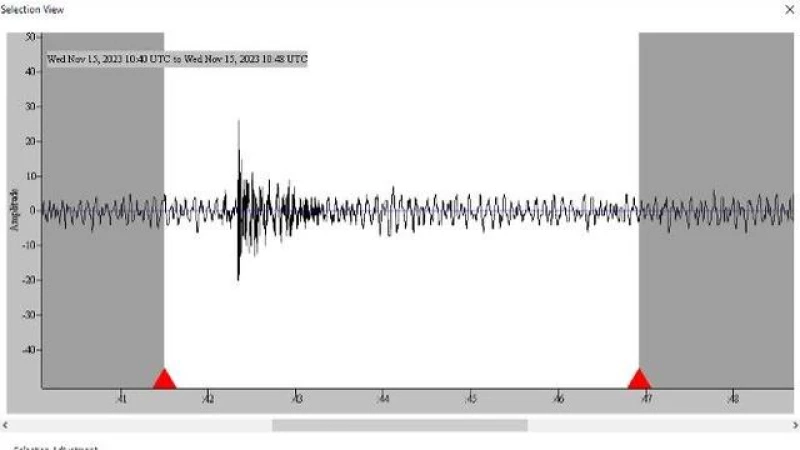A powerful earthquake centered outside of New York City shook much of the East Coast on Friday morning.
Here's a look into the causes of earthquakes on the East Coast and the factors that can trigger such seismic activity.
Understanding the Science Behind Earthquakes
Earthquakes are a result of the movement of the Earth's tectonic plates. These massive plates in the Earth's crust can exert pressure on each other, leading to seismic activity.
Most earthquakes occur along fault lines, which are fractures in the Earth's crust that enable plate movement.
When two tectonic plates suddenly slide past each other, they release seismic energy in the form of waves that ripple through the Earth's surface, causing tremors and shaking, as explained by the USGS.
Defining an Earthquake in Scientific Terms
Scientifically speaking, an earthquake is the result of seismic energy generated when tectonic plates shift and create movement along fault lines, leading to vibrations on the Earth's surface.
Seismic waves act like ripples on a pond, according to the USGS.
The epicenter of an earthquake, the point directly above where it begins, experiences the most intensity, with the effects diminishing as they travel outward. In the recent earthquake on Friday, the epicenter was located in northern New Jersey. However, its impact was felt in New York City, Philadelphia, and even as far as Baltimore.
What was the cause of the earthquake on the East Coast?
The exact fault line responsible for Friday's earthquake remains unknown.
While on the West Coast, it is often feasible to pinpoint the specific fault line from which a quake originated, the USGS explained that this is due to the thorough research conducted on plate boundaries like the San Andreas fault. However, on the East Coast, the nearest plate boundaries are situated in the middle of the Atlantic Ocean, making it challenging to study the region.
"The urban corridor (between New York City and Wilmington, Delaware) is laced with known faults but numerous smaller or deeply buried faults remain undetected. Even the known faults are poorly located at earthquake depths," the USGS says on its website. "Accordingly, few, if any, earthquakes in the urban corridor can be linked to named faults."
Are earthquakes common on the East Coast?
Earthquakes are rarer on the East Coast compared to the West Coast, but they do happen. Moderately damaging earthquakes strike between New York and Wilmington, Delaware about twice a century, the USGS said, and smaller earthquakes are felt in the region roughly every two to three years.
While East Coast earthquakes are less common than their counterparts on the West Coast, they tend to be felt over a wide area, as evidenced by Friday's quake, the USGS said. A 4.0 magnitude quake could be felt more than 60 miles from its epicenter, the agency said.
Will earthquakes happen more frequently?
In January, the USGS estimated that nearly 75% of the U.S. could experience a damaging earthquake in the next century. The prediction is based on research done by dozens of scientists and engineers using seismic studies, historical geological data and new information to identify nearly 500 additional fault lines that could produce damaging quakes.
It is possible that the central and northeastern Atlantic Coastal region could see more temblors, researchers said. Earthquakes are also likely in California and Alaska, which are historically seismically active regions.







